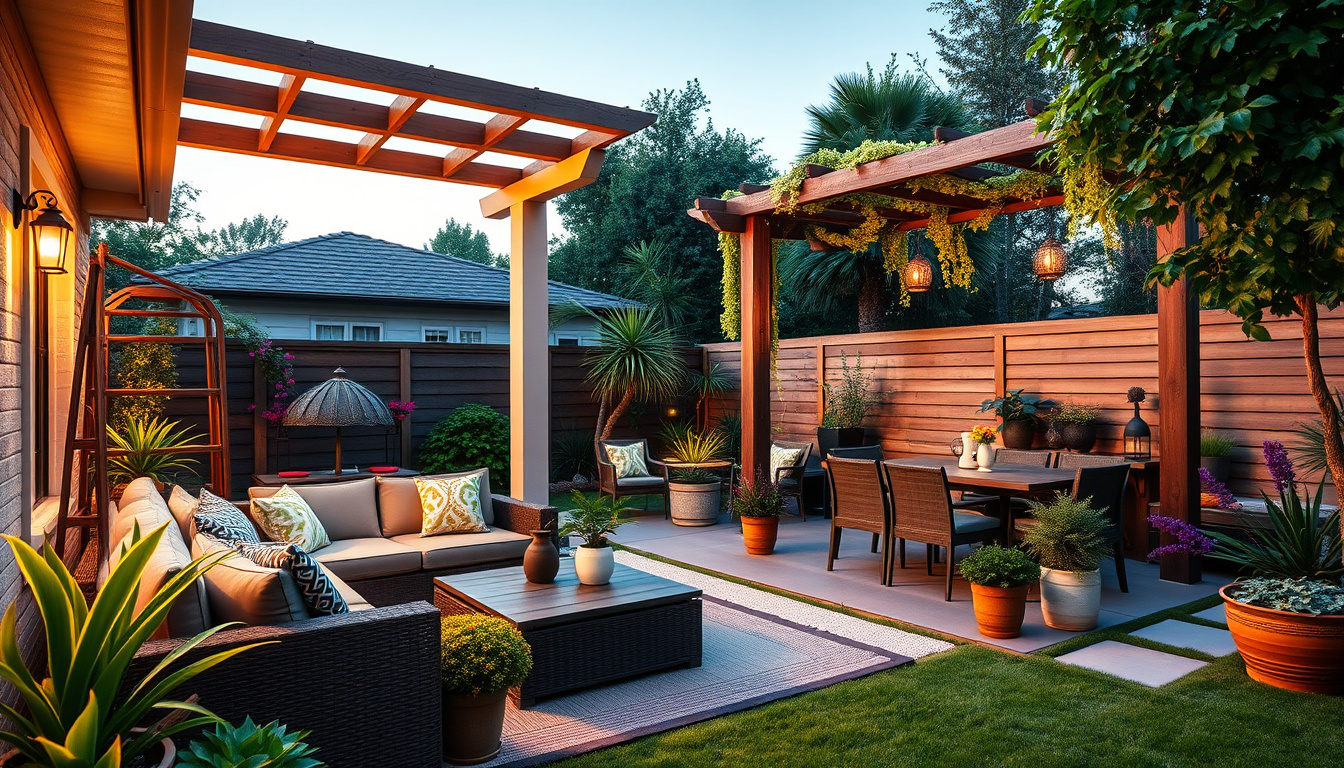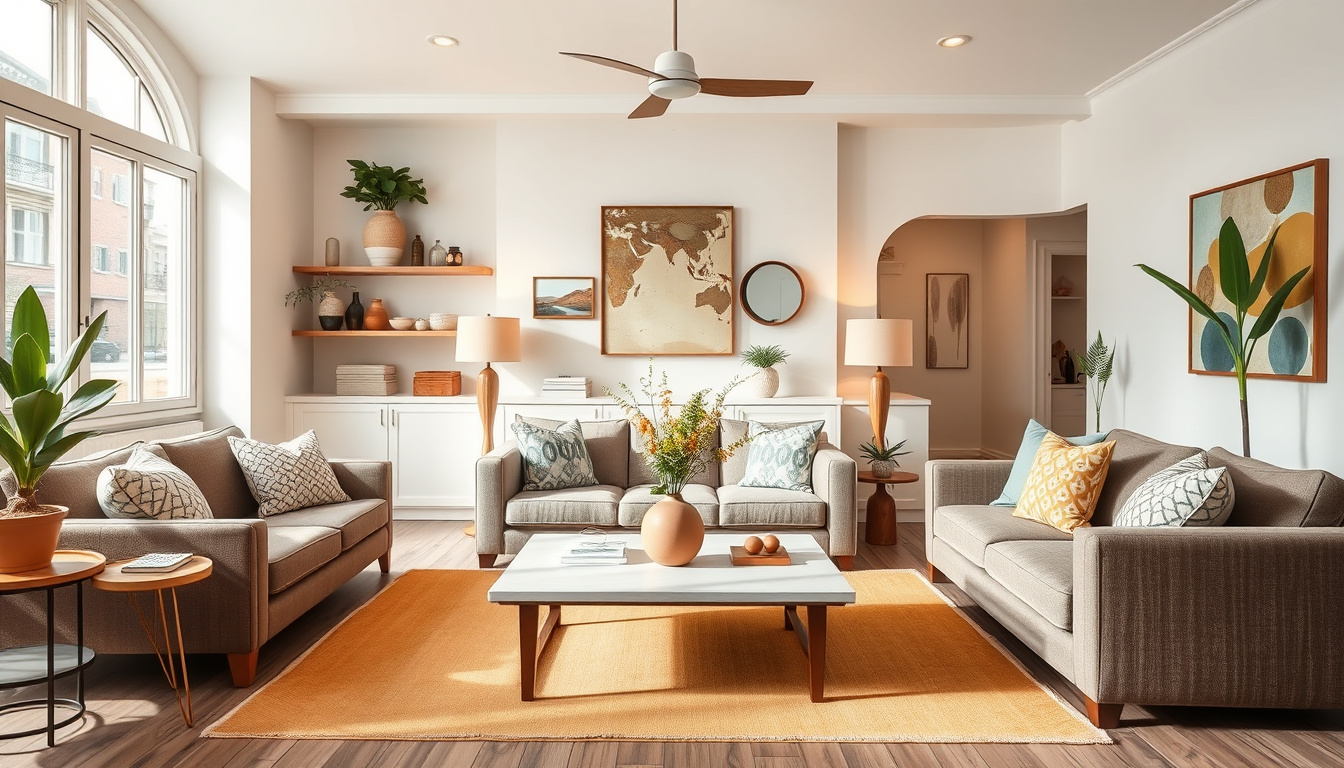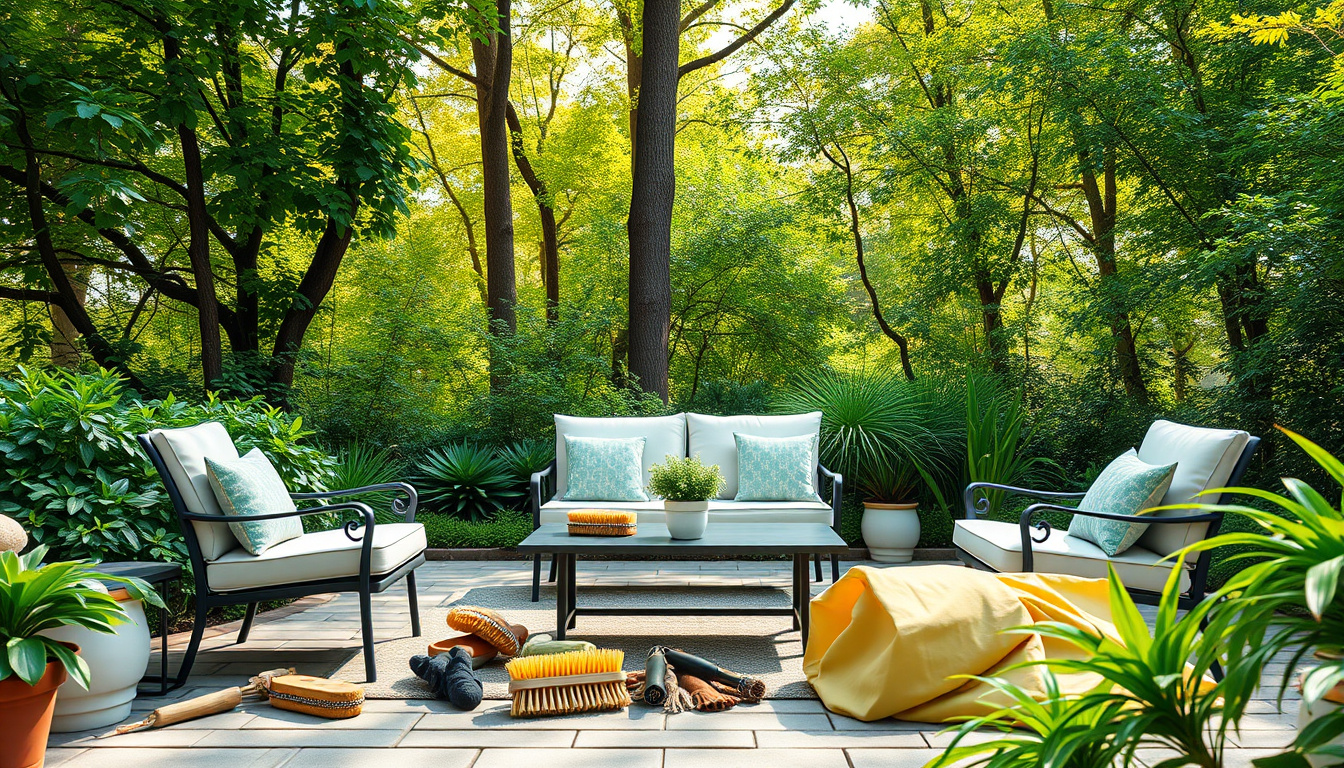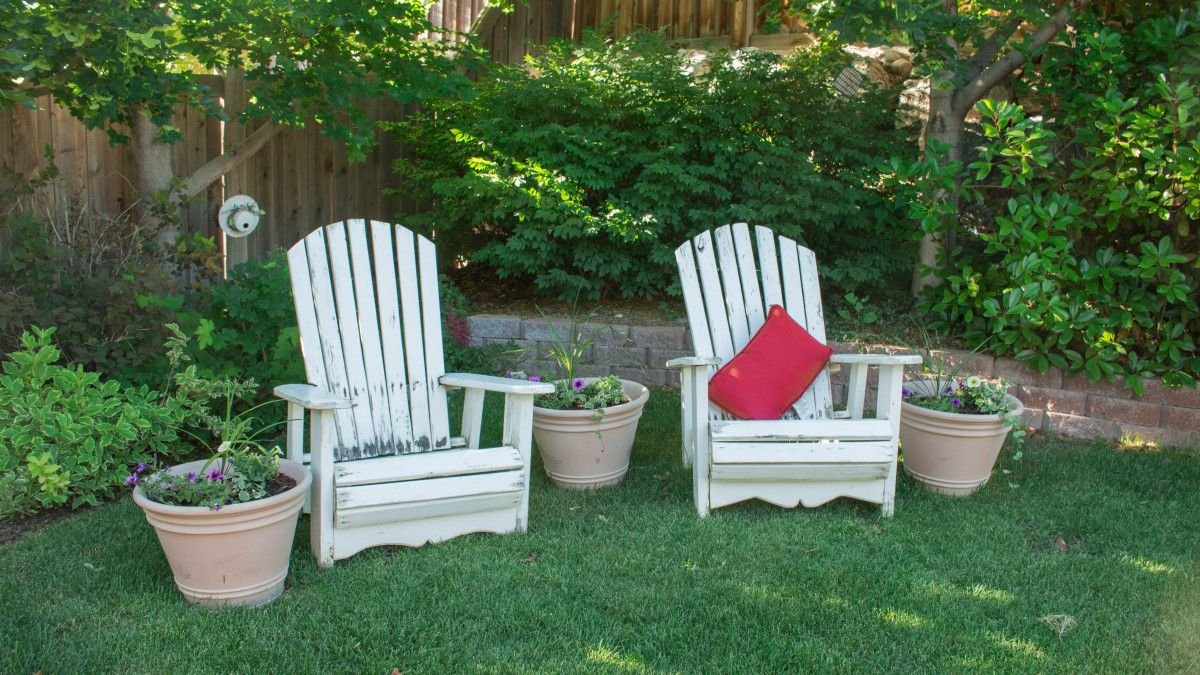Transform Your Backyard: The Ultimate Guide to Choosing the Perfect Outdoor Furniture
March 19, 2025 | by The Outdoor Master

Your backyard is an extension of your home—a place where you can relax, entertain, and enjoy the beauty of nature.
The right outdoor furniture can enhance this space, making it both functional and inviting.
This guide will help you navigate the process of selecting outdoor furniture that suits your style, needs, and environment, ensuring your backyard becomes your personal haven.

Key Takeaways
- Assess your outdoor space’s size and layout to select the best furniture arrangement.
- Different materials offer unique benefits, so choose outdoor furniture that suits your climate.
- Align your outdoor furniture style with your home’s design for a cohesive aesthetic.
- Select comfortable and functional pieces that enhance your lifestyle and outdoor experience.
- Regular maintenance is key to prolonging the life of your outdoor furniture, so understand care requirements.
Understanding Your Outdoor Space: Assessing Size and Layout
When planning to enhance your outdoor space, it’s essential to start with a comprehensive assessment of both its size and layout.
Understanding the dimensions of your area allows you to choose outdoor furniture that fits harmoniously without overcrowding.
Take measurements of the width and length of your patio, balcony, or garden, and consider factors such as existing landscaping or architectural features that may influence your design.
Additionally, think about how you intend to use the space.
For example, will your outdoor area serve as a cozy retreat for relaxation, or do you plan to host gatherings with friends and family?
By aligning your outdoor furniture choices with the specific needs of your environment and lifestyle, you can create a functional and inviting outdoor setting that reflects your personal taste.
Material Matters: A Guide to Different Types of Outdoor Furniture
When it comes to choosing outdoor furniture, the material you select plays a crucial role in durability, maintenance, and aesthetics.
This guide will help you navigate the various options available in outdoor furniture to suit your specific needs and preferences.
Wooden outdoor furniture, such as cedar or teak, is a popular choice due to its natural beauty and durability.
Teak wood is particularly resistant to the elements, making it ideal for outdoor use; however, it requires regular maintenance to preserve its appearance and longevity.
On the other hand, softwoods like pine may require more frequent treatment to prevent rotting and fading due to exposure to weather conditions.
Metal outdoor furniture, often made from aluminum or wrought iron, offers a modern and sleek look.
Aluminum is lightweight and resistant to rust, which makes it easy to move and maintain.
Wrought iron, while heavier and sturdy, often features intricate designs, adding a touch of elegance.
However, it may need protective coatings to prevent rusting in humid climates.
For those seeking low-maintenance options, synthetic materials such as resin wicker or plastic have become increasingly popular.
These materials are designed to withstand harsh weather without fading or warping.
Resin wicker can mimic the look of traditional wicker while being much more durable.
Additionally, outdoor furniture made from recycled plastic is both environmentally friendly and tough, providing a wide range of styles to choose from.
Lastly, consider the versatility of fabric-covered outdoor furniture.
Fabrics designed for outdoor use, like solution-dyed acrylic, are engineered to resist fading, mildew, and water.
While these pieces may require more cleaning, they can offer unparalleled comfort in your outdoor space.
By understanding the characteristics of different materials, you can choose outdoor furniture that fits your lifestyle, ensuring your outdoor area is both functional and inviting.
‘The outdoor space is an extension of the home, a place where we can relax, entertain, and enjoy the beauty of nature. Choosing the right outdoor furniture is key to creating that perfect oasis.’

Style and Aesthetics: Aligning Furniture with Your Home’s Design
When it comes to enhancing your outdoor space, outdoor furniture plays a crucial role in reflecting your home’s overall style and aesthetics.
The key is to choose pieces that not only provide comfort but also complement the architectural style and color palette of your home.
For example, if your house features a modern design, sleek metal or minimalist wooden outdoor furniture can create a cohesive look.
Conversely, if your home leans toward a more traditional style, opting for classic wicker or rustic wooden furniture can bring harmony to your outdoor area.
Additionally, consider the surroundings—floral patterns or vibrant colors can energize a garden setting, while neutral tones may suit a patio overlooking a serene landscape.
By aligning your outdoor furniture with the design elements of your home, you can create an inviting atmosphere that blends seamlessly with its environment.
Comfort and Functionality: Choosing the Right Pieces for Your Lifestyle
When it comes to enhancing your outdoor spaces, selecting the right outdoor furniture is crucial for both comfort and functionality.
First, consider the activities you enjoy.
For those who love hosting gatherings, look for durable seating options that encourage conversation, such as sectional sofas or lounge chairs.
If you prefer meals al fresco, a sturdy dining set with weather-resistant materials is essential.
Additionally, think about storage solutions—tables with built-in compartments can help keep your space organized.
Opt for fabrics that can withstand the elements, like solution-dyed acrylic, to ensure longevity and easy maintenance.
By prioritizing comfort alongside practicality, you can create an inviting outdoor area that suits your lifestyle and becomes a true extension of your home.

Maintenance and Care: Keeping Your Outdoor Furniture in Top Shape
When it comes to outdoor furniture, proper maintenance and care are essential to ensuring its longevity and appearance.
Start by regularly cleaning your furniture to remove dirt and debris.
Depending on the material—such as wood, metal, or plastic—use appropriate cleaning solutions.
For wooden pieces, a gentle soap and water mixture can work wonders, while metal surfaces may benefit from a mixture of vinegar and water to combat rust.
Additionally, consider applying a weather-resistant sealant to wooden furniture to protect it from the elements.
If your outdoor furniture is made of metal, check for any signs of corrosion regularly and treat it immediately to avoid further damage.
During the off-season, storing your outdoor furniture indoors or using furniture covers can help protect it from harsh weather.
By incorporating these simple maintenance tips, you can ensure your outdoor furniture remains attractive and functional for many years to come.
Frequently Asked Questions
What factors should I consider when assessing my outdoor space for furniture placement?
When assessing your outdoor space, consider the size of the area, any existing landscaping features, the layout of the space, and how you intend to use it.
Take measurements to ensure that the furniture you choose fits comfortably without crowding the area.
What are the different materials available for outdoor furniture, and how do they compare?
Common materials for outdoor furniture include wood, metal, plastic, and wicker.
Wood offers a classic look but requires more maintenance.
Metal is durable but can get hot in the sun.
Plastic is lightweight and easy to care for, while wicker adds charm but should be protected from the elements.
Each material has its pros and cons, so choose based on your preferences and climate.
How do I match outdoor furniture style with my home’s design?
To align your outdoor furniture with your home’s design, consider the architectural style and color palette.
If your home is modern, opt for sleek lines and neutral shades; for a traditional home, choose classic shapes and colors.
Creating a cohesive look enhances the overall aesthetic of your property.
What kind of outdoor furniture is best for low-maintenance lifestyles?
If you prefer low-maintenance options, consider furniture made from materials like aluminum or high-density polyethylene (HDPE) plastic, as they are resistant to fading and staining.
Look for weatherproof cushions and ensure that your furniture is designed to withstand the elements with minimal care.
How can I keep my outdoor furniture in top shape year-round?
To maintain your outdoor furniture, regularly clean it according to the material guidelines—use gentle soap and water for most surfaces.
Invest in covers for protection during harsh weather and store cushions indoors when not in use.
Applying protective sealants for certain materials can also extend their lifespan.
RELATED POSTS
View all



